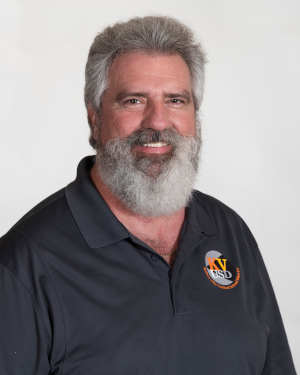- Dave McQueen
- Posted On
Putting Students First: I’m thankful for silver linings and support for our schools

What do you do when one of your favorite colleagues tells you they’ve been offered a wonderful job somewhere else? You congratulate them and wish them well with all your heart, even though you’ll miss them.
That’s what we did when our assistant superintendent, Tim Gill, shared the news that Middletown Unified asked him to become their district superintendent. We were sad to see him go, but happy that his skill and experience will be put to good use in another Lake County school district.
The vacancy created by Mr. Gill’s departure gave us a chance to see whether we had people in our district ready for new challenges. Turns out, we did!
Dr. Nicki Thomas has moved from being principal at Mountain Vista Middle School, or MVMS, to becoming our new assistant district superintendent.
Scott Conrad has moved from being the vice principal at Kelseyville High School, or KHS, to becoming the principal at MVMS.
And Adriana Macias has moved from teaching English language development at MVMS to becoming the assistant principal at KHS.
Whenever we can promote qualified candidates from within our district, that’s what we do. Ms. Macias is not only a qualified candidate who is ready to put her administrative credential to good use, she is also a 2002 KHS graduate. So, the silver lining of Mr. Gill leaving is that Middletown gains a great administrator and we get to welcome Ms. Macias to our leadership team.
In other good news, we’re making it easier for people to support their favorite Kelseyville schools and projects. We’ve partnered with DonorsChoose, an online fundraising platform that makes it easy for people to help our teachers on projects that require extra support.
DonorsChoose was started in 2000, when a high school history teacher from the Bronx in New York looked at all the money he and his colleagues were spending on books, art supplies and other materials for their students. He figured there were people out there who'd want to help as long as they could see where their money was going, so he developed a website where teachers could request support for their classroom projects, and donors could support the ones they liked best. Now, hundreds of thousands of dollars have been donated to schools across the country.
If you would like to support a classroom project at Kelseyville Unified, visit www.donorschoose.org/kvusd?active=true.
As one year ends and another begins, it’s a great time to appreciate the blessings in our lives. Some are big and some are small, but they all make our lives better.
I’m really sad to see Tim Gill go, but I’m grateful to have a bilingual, bicultural administrator who knows our students and can step into leadership at the high school. So, even when life seems to be throwing you a rotten tomato, sometimes good can come of it.
The more you look for the positive, the easier it is to find. And the more you find it, the happier you’re likely to be.
I’m not just making this up. Harvard Medical School says, “In positive psychology research, gratitude is strongly and consistently associated with greater happiness. Gratitude helps people feel more positive emotions, relish good experiences, improve their health, deal with adversity, and build strong relationships.”
I am grateful that I work in a wonderful school district with wonderful staff, parents and students. I wish you a happy new year!
Dave McQueen is superintendent of Kelseyville Unified School District.







